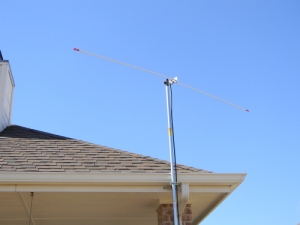Lots of good information, and stuff to ponder and consider; thank you all, for the well thought out responses and discussion.
I knew from the gitgo, that this project would be a compromise. It's my understanding that mobile antennas, in general, are a compromise. I'm OK with that (not much choice, but to be OK with that, lol).
I probably should have posted this thread BEFORE I bought the 102" whips. But, I just happened to run across them on a day that they were on my mind, so I bought 2, on a whim. They've been riding in my load lock rack, ever since. Over the past couple of years, I've spent hundreds of dollars on trying new antennas. I've already got the 102's, so I'll play with those, for now, but I'll be open to trying other things, too. (And, knowing me, I'll not only be open to it, but inclined to it, too. I just can't leave well enough alone. )
I don't mind the height of the antennas; I rather like the idea of taller ones. Most of the lower structures that I drive under, or through, are at lower speeds, anyway, so whacking the antennas on things doesn't much concern me. The last antenna that I had that high, survived (and is still in use, just about a foot lower, now.)
Using fiberglass for the top half, I'm a little shy of; I've broken a few. Winters are hard on antennas, with ice build up. The lower half is less a concern. I can tie those in place, so that they don't move much. It's also far quicker and easier to wipe them down with WD40, to discourage ice.
One thing with mounting antennas on the rear grab bars, is the grab bars are mounted to fiberglass ferrings, which get the antennas out about 20" from the corner of the metal truck walls, so while they may still be close (obviously), they're not pressed up against the body.
@StrangeBrew : Interesting that you brought up the vicegrip temp mount. I keep one of those, along with a spare radio, on my truck. Occasionally, the wife and I have to "rescue" an abandoned tractor, or drive a loaner for a couple of days. Since I've had such great luck with my current dipole setup, I was going to do something similar with the vicegrip. I was figuring on maybe a couple of Firestiks on fold downs, to make it easier to store, and quick to put up.
@Robb:
"But I'm not sure the cost would be worth the experimental time/money/aggravation to get those 'ducks in a row' - IMO. Not saying this would be
that easy."
It comes out of my entertainment fund, lol. Also, it's a learning experience for me. And, there's not but so much that I can tinker with, while on a truck. I have to have SOMETHING to do, to occupy my hands.

